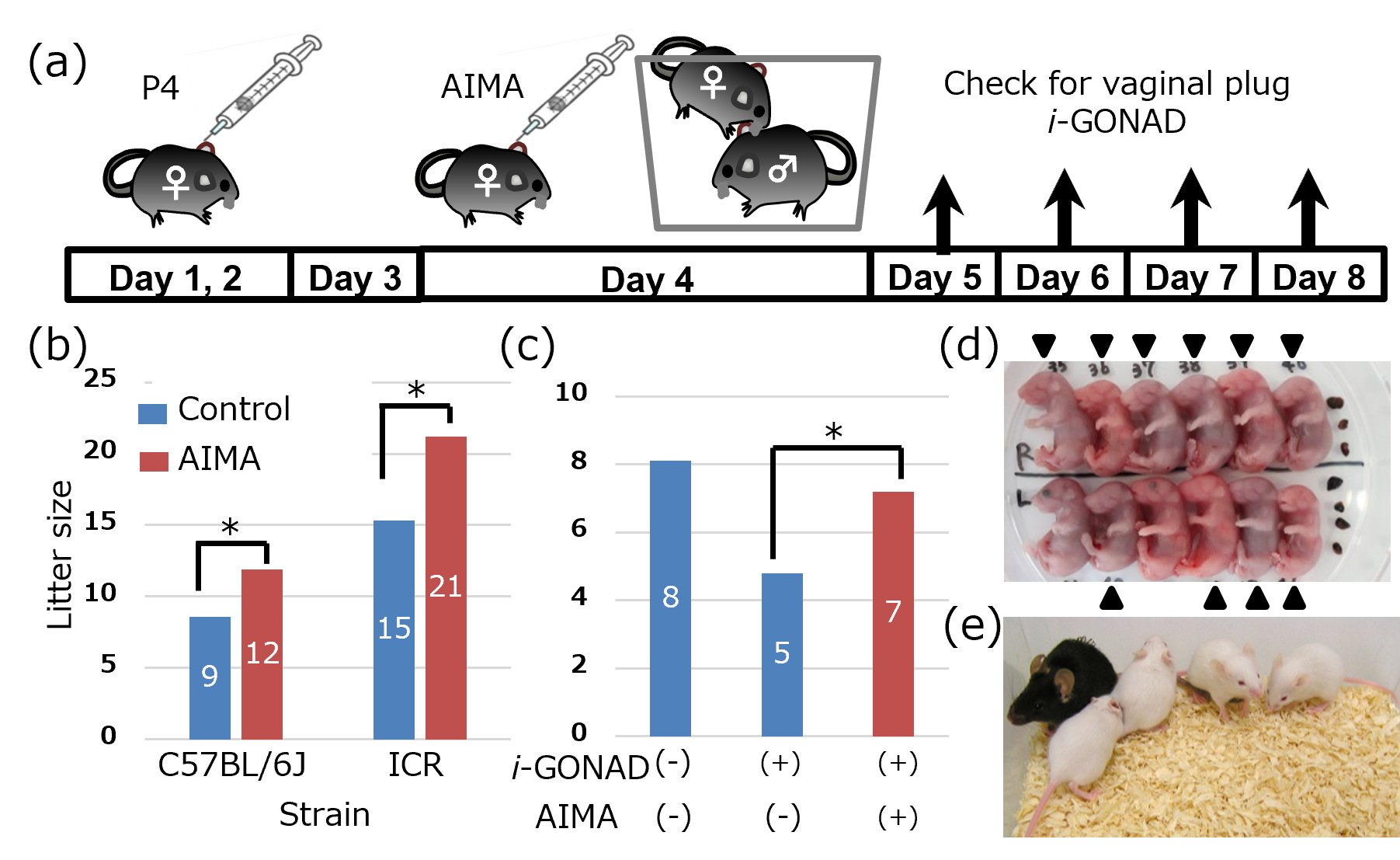 |
BRC Current Technology June 2022 |
18. Successful increase of the litter size
|
| In mammals, the number of offspring produced by a female is determined by follicle-stimulating hormone (FSH) that supports oocyte growth and other reproductive factors in each species. We produced anti-inhibin monoclonal antibodies (AIMAs) to block inhibin, which suppresses FSH secretion, and successfully increased the litter sizes by administering it [1]. The litter sizes increased approximately 1.4-fold in C57BL/6J and ICR mice, and the resultant offspring grew normally. We applied this technique to the in vivo-genome editing method (i-GONAD) [2], and attained an 1.5-fold increase in the number of pups after i-GONAD treatment without affecting the genome-editing efficiency (in collaboration with Prof. M. Ohtsuka, Tokai University) [1]. This AIMA technique method may be effective in improving reproductive performance of mouse strains, especially in the cases of using aged females, genome editing by i-GONAD, and propagation of mouse strains with poor reproductive ability. |
|
| References: | [1] | A Hasegawa et al., “Use of anti-inhibin monoclonal antibody for increasing the litter size of mouse strains and its application to in vivo-genome editing technology,” Biol. Reprod. 2022 Apr 2:ioac068. doi: 10.1093/biolre/ioac068. |
| [2] | M. Ohtsuka et al., “i-GONAD: a robust method for in situ germline genome engineering using CRISPR nucleases,” Genome Biol. 2018 Feb 26;19(1):25. doi: 10.1186/s13059-018-1400-x. |





